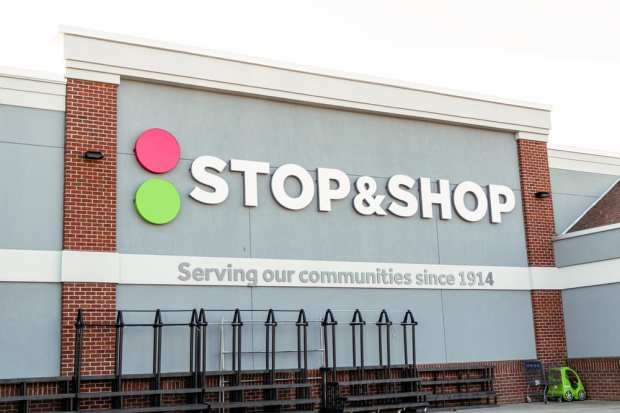GO Time: Stop & Shop Polishes Loyalty Program

The average American consumer belongs to 18 loyalty programs. And they only use eight of them, leaving $48 billion on the table in points and rewards. The difference between belonging to a loyalty program and actually using it can make a huge difference in how the issuing company drives value and encourages purchase recency and frequency. It’s why companies like Stop & Shop need executives like Rachel Stephens.
Officially, Stephens is VP of loyalty and digital for Stop & Shop, a 400-plus store chain in the Northeast. It’s owned by international conglomerate Ahold Delhaize and has built its reputation on being a community-based neighborhood grocer. During her two year tenure at the company, Stephens has driven an omnichannel strategy of which the company’s loyalty program is an integral part. Among her other achievements: a 47 percent increase in incremental foot traffic, a 117 percent increase in click-through rates for paid search and a new roadmap for digital marketing and loyalty. But her latest achievement might be her most significant.
Stephens and her team have been the driving force behind Stop & Shop’s new enhancements to its eCommerce platform and its revamped loyalty program, called Stop & Shop GO Rewards. The enhancements unify several areas of the shopper digital experience and also bring online and offline shopping together. The changes also come as the parent company doubles down on eCommerce and as Stop & Shop adds three new warehouses and 50 more shopper pickup locations this year. The new program was launched in mid-August and is already producing results.
“We actually did more of a softer launch earlier, so we really wanted to ease into it and ensure that systemically nothing went wrong from the perspective of our platform and technology,” Stephens tells PYMNTS. “Everything has been going incredibly well. We’ve transitioned approximately a million customers so far, which is really great. We’ve seen our customers making that shift, from fuel to grocery redemptions. It’s very early stages, but very promising to see that engagement shift and to see the program resonating with cardholders already.”
Fuel, which Stephens mentioned, is one of the centerpieces of the GO program, but the nuances are where the changes unify the offline-online experience for shoppers. The company has had a home ordering and delivery service called Peapod for several years. Customers who previously used Peapod.com and the Peapod app will order directly from StopandShop.com or via the company’s mobile app. The unified eCommerce site allows shoppers to combine relevant in-app and on-site promotions, complete their grocery order online and choose pickup or home delivery.
The program also allows shoppers to earn one GO Point for every dollar spent in-store or online. While previously only gas rewards were available, customers can convert their GO Points into different rewards including money off their next grocery order, gas savings at Stop & Shop fuel stations and participating Shell locations or even donating to their local food bank.
While Stephens’ official role is to create digital marketing campaigns and loyalty programs, it all comes under the heading of customer strategy. Loyalty programs, depending on the company administering them, are about getting, keeping and growing customers. Stephens says GO is designed for customer acquisition, although her first priority is making sure existing customers are comfortable with the program’s changes.
“The second phase of the program is really acquisition and that’s where we rely on different channels, like digital media, television, social media and search,” she says. “We already have some attention called to the program within our circular and within our stores, but again, we’re just beginning to flow our marketing approach in this program. We want to ensure that we have a steady flow of customers hitting the platform and that we’re testing it appropriately. So we are now going to start to really leverage more of those mass channels, like television and radio to acquire new customers.”
It also exists to increase customer value. Stephens is counting on the GO program to convince recession-wary customers to shop at Stop & Shop. She has also thought through a key question regarding eCommerce and grocery: basket size. If consumers buy more in-store than they planned on originally, does a shopping list and an eCommerce order remove that incremental revenue?
“You can certainly incentivize through different personalized offers and rewards,” she says. “Online that’s much easier, and online you can replicate that experience through recommendations. That’s really where that the personalized engine comes into play. So when you log onto the website and we can see your past purchases, we know likelihood and propensity to purchase other items. So if you’re sticking with pasta, we’re gonna recommend sauce to you. I think that that’s really where there’s some true value in the data behind the system. In-store it’s about merchandising products together, and there’s a piece of that online as well.”
Stephens and her team are constantly evaluating new enhancements to the program using data gleaned from customer interactions. She’s considering changes to a subscription model that the company has tried in the past and stepping up Stop & Shop’s ability to personalize offers. The key to loyalty programs, she says, is always thinking about what’s next.
